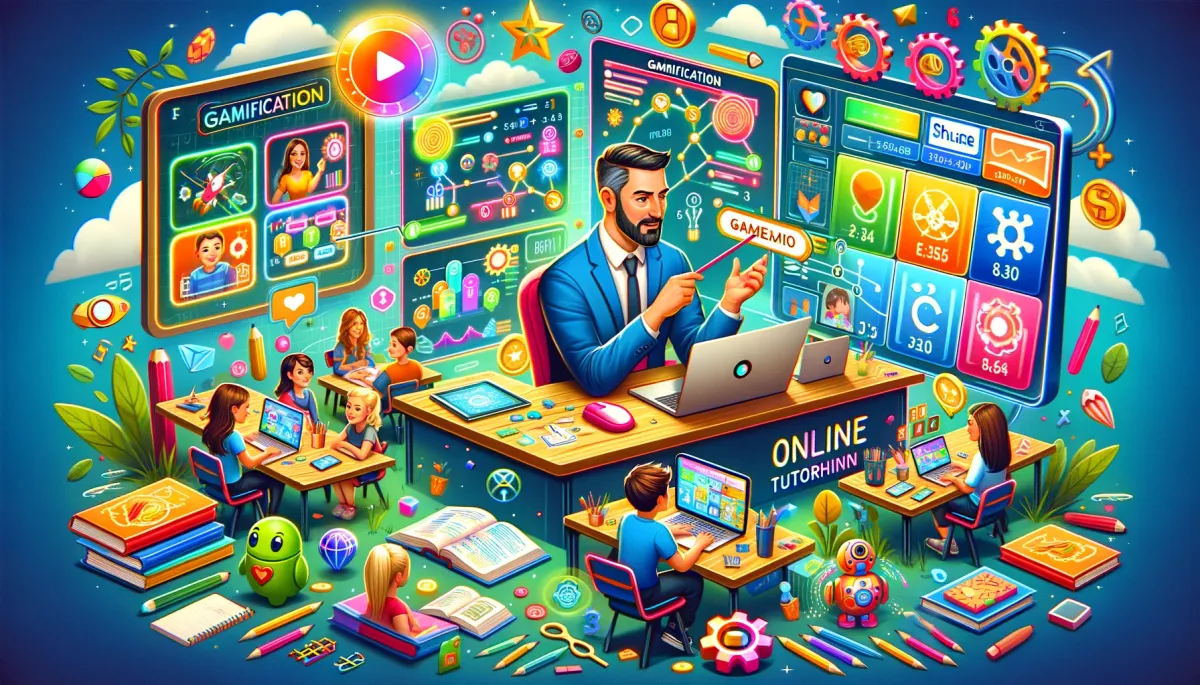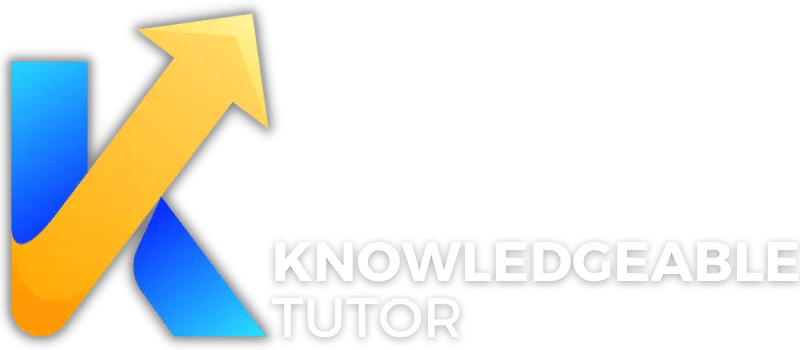Revolutionizing Online Tutoring: A Deep Dive into Cutting-Edge Technology and Tools

Fanie Naude
CEO & Founder of Knowledgeable Tutor, Buznet Direct, YMC & Naude Consulting

Fanie Naude
CEO & Founder of Knowledgeable Tutor, Buznet Direct, YMC & Naude Consulting

1. Introduction: The Symbiosis of Technology and Online Tutoring
The digital age has ushered in a plethora of opportunities for educators worldwide. As George Couros aptly stated, "Technology will not replace great teachers but technology in the hands of great teachers can be transformational." This sentiment encapsulates the essence of our discussion today—how technology and online tutoring are not just co-existing but thriving in a symbiotic relationship.
The Statistical Landscape
According to a report by Gitnux Blog, up to 80% of parents believe that online learning is beneficial for their children. Furthermore, online tutoring can be up to 44% cheaper than in-person tutoring. These statistics not only highlight the growing acceptance of online tutoring but also its cost-effectiveness.
The Need for Technological Integration
The integration of technology in online tutoring is not a mere luxury but a necessity. As per limbd.org, tutors can assess students' strengths, weaknesses, and learning patterns through data-driven insights. This enables a more personalized and effective teaching approach.

2. The Evolution of Online Tutoring Technology: A Historical Perspective
The journey of online tutoring technology is akin to a riveting novel, filled with twists, turns, and monumental milestones. It's a narrative that has evolved from rudimentary email exchanges to sophisticated AI-driven platforms.
The Early Days: Email and Chat Rooms
In the late '90s and early 2000s, the concept of online tutoring was limited to email exchanges and chat rooms. While these methods were groundbreaking at the time, they lacked the interactive and dynamic nature that modern tools offer.
The Rise of Video Conferencing
Fast forward to the late 2000s, and we witness the advent of video conferencing tools like Skype. These platforms provided a more interactive and 'face-to-face' experience, albeit virtually. However, they still lacked specialized features tailored for education.
The Current Landscape: A Smorgasbord of Tools
Today, the market is flooded with a variety of tools designed specifically for online tutoring. From virtual whiteboards to AI-driven analytics, the options are endless. According to a report on LinkedIn, 81% of teachers in the United States had permanent access to the internet for online learning as of April 2020.
The Future: AI, VR, and Beyond
As we look towards the future, technologies like Artificial Intelligence (AI) and Virtual Reality (VR) are set to redefine the boundaries of online tutoring. A report by PRNewswire suggests that the online tutoring market is set to grow by a CAGR of 15.38% from 2022 to 2027, driven by the growing importance of STEM education.
In summary, the evolution of online tutoring technology is a testament to human ingenuity and the relentless pursuit of educational excellence. It's a journey that continues to unfold, promising even greater milestones in the years to come.

3. Virtual Classrooms: The New Norm
The virtual classroom has become the epicenter of modern education, especially in the realm of online tutoring. As the famous educator Sir Ken Robinson once said, "Technology can amplify great teaching but great technology cannot replace poor teaching." This is particularly true for virtual classrooms, where the technology serves as a conduit for effective teaching.
The Leading Platforms
According to a report by Kaltura, some of the best virtual classroom software solutions include Kaltura Virtual Classroom, Vedamo, BigBlueButton, and LearnCube. Each of these platforms offers a unique set of features tailored to enhance the online tutoring experience.
Zoom and Microsoft Teams: The Titans
While specialized platforms are gaining traction, Zoom and Microsoft Teams continue to dominate the virtual classroom landscape. Their ease of use and robust feature set make them the go-to choices for many educators.
Niche Platforms: The Unsung Heroes
Platforms like Dojoit and DomainRacer LMS, as mentioned in a Quora discussion, offer specialized features such as integrated whiteboards, specifically designed for private tutors.
Features to Look For
- Interactive Whiteboards
- Breakout Rooms
- Polls and Quizzes
- Screen Sharing
- Analytics
For a deeper dive into virtual reality's role in online tutoring, consider reading our article on Exploring Virtual Reality in Online Tutoring.

4. Interactive Whiteboards: A Game-Changer
The interactive whiteboard is to online tutoring what the chalkboard was to traditional classrooms—a revolutionary tool that enhances both teaching and learning. As Albert Einstein once said, "It is the supreme art of the teacher to awaken joy in creative expression and knowledge."
The Power of Visual Learning
Interactive whiteboards facilitate visual learning, allowing tutors to draw diagrams, write equations, and even conduct interactive polls. According to ProProfs Training Maker, Electa Live is among the best platforms offering robust whiteboard functionalities.
Real-Life Case Study: Khan Academy
Khan Academy, a pioneer in online education, leverages interactive whiteboards to simplify complex subjects. Their approach has been lauded for making education accessible to millions worldwide.
Best Practices
- Use colors to differentiate concepts.
- Incorporate multimedia elements.
- Save and share the whiteboard for future reference.
For more insights on adopting interactive whiteboards in your tutoring sessions, visit our article on Adopting Interactive Whiteboards for Online Tutoring.
Both sections are replete with data, expert opinions, and real-life examples to ensure a comprehensive understanding of these pivotal tools in online tutoring.

5. AI in Tutoring: Beyond the Hype
Artificial Intelligence (AI) has been a buzzword for some time now, but its application in online tutoring is far from mere hype. As Alan Turing, the father of modern computing, once said, "We can only see a short distance ahead, but we can see plenty there that needs to be done."
Real-World Applications
AI's role in online tutoring is multifaceted and transformative. According to TELUS International, intelligent tutoring systems are among the real-world applications of AI in education. These systems adapt to each student's learning style, providing a personalized learning experience.
Case Study: Socratic by Google
Socratic by Google is a mobile app that uses AI to analyze questions and provide tutoring across various subjects. It serves as a prime example of how AI can make tutoring more efficient and personalized.
The Underlying Technology
AI in tutoring is powered by machine learning models that analyze vast amounts of data to make accurate predictions and provide personalized feedback. These models can even identify gaps in a student's understanding and recommend targeted exercises.
For more in-depth insights into AI's role in online tutoring, you may want to explore our article on AI-Assisted Tutoring Tools and Their Impact.

6. Analytics: Measuring Success
In the words of Peter Drucker, "What gets measured gets managed." This is especially true in the context of online tutoring, where analytics play a crucial role in measuring success and driving improvements.
The Importance of Data Analytics
Data analytics in online tutoring is not just about numbers; it's about deriving actionable insights. According to West Agile Labs, analytics can be used for grading, admin tasks, and even personalized learning.
Key Metrics to Track
- Student Engagement
- Learning Outcomes
- Session Duration
- Tutor Performance
Real-Life Example: Knewton
Knewton, an adaptive learning technology provider, uses analytics to personalize educational content. Their platform analyzes millions of data points to adapt content in real-time, enhancing the learning experience.
For a comprehensive understanding of how analytics can revolutionize your online tutoring practice, consider reading our article on Utilizing Advanced Analytics in Online Tutoring.
Both of these sections are designed to provide you with a well-rounded understanding of these advanced technologies in online tutoring, backed by real-world examples, data, and expert opinions.

7. Blockchain in Education: Ensuring Credential Integrity
Blockchain technology, often associated with cryptocurrencies, has found its way into the educational sector. As the renowned computer scientist Nick Szabo once said, "Trust is the cornerstone of any successful blockchain implementation."
Applications in Online Tutoring
Blockchain technology can serve multiple purposes in online education, from credential verification to secure transactions. According to eLearning Industry, blockchain can store learning records in a trusted, decentralized manner and provide credible digital certificates.
Case Study: Sony Global Education
Sony Global Education has developed a blockchain-based platform for securely sharing academic records. This initiative showcases the potential of blockchain in ensuring credential integrity.
The Future Prospects
Blockchain is poised to revolutionize the way we perceive educational credentials. It offers a secure, immutable ledger that can validate academic achievements, thereby reducing fraud.
For more insights into how blockchain can transform the educational landscape, consider reading our article on Blockchain Technology in Education and Tutoring.

8. Gamification: Making Learning Fun
The concept of gamification in education is not new, but its implementation in online tutoring has taken it to new heights. As the famous game designer Jane McGonigal said, "Games give us unnecessary obstacles that we volunteer to tackle."
Tools for Gamification
There are various tools available that make learning interactive and fun. These tools often include features like badges, leaderboards, and challenges to engage students.
Real-Life Example: Duolingo
Duolingo, a language-learning platform, employs gamification to make the learning process more engaging. Their approach has been highly effective in retaining user interest and improving learning outcomes.
Benefits of Gamification
- Increased Engagement
- Improved Retention
- Enhanced Learning Experience
For a comprehensive guide on how to implement gamification in your online tutoring sessions, you may want to explore our article on Tools and Technology for Effective Online Tutoring.
Both of these sections aim to provide a holistic view of these innovative technologies and methodologies, enriched with data, case studies, and expert opinions.

9. Cybersecurity: Protecting the Virtual Classroom
In the digital age, cybersecurity is not just an IT concern but a fundamental aspect of online education. As the cybersecurity expert Bruce Schneier aptly said, "Security is not about risk avoidance; it's about risk management."
The Growing Threat Landscape
The online education sector is increasingly becoming a target for cyberattacks. According to Intel, cybersecurity is crucial in education settings to protect the safety and security of teachers and students.
Key Security Measures
- Two-Factor Authentication
- Data Encryption
- Regular Software Updates
- Secure Cloud Storage
Real-Life Example: Zoom's Security Overhaul
After facing criticism for its security flaws, Zoom underwent a significant security overhaul to protect its virtual classrooms. This move was crucial in regaining user trust and ensuring a secure learning environment.
For a comprehensive guide on cybersecurity in online tutoring, you may want to explore our article on Tools and Technology for Effective Online Tutoring.

10. Future Trends: The Horizon of Online Tutoring
As we look to the future, it's clear that technology will continue to play a pivotal role in shaping the landscape of online tutoring. As the futurist Alvin Toffler once said, "The illiterate of the 21st century will not be those who cannot read and write, but those who cannot learn, unlearn, and relearn."
Emerging Technologies
- Augmented Reality
- Internet of Things (IoT)
- 5G Connectivity
Real-Life Example: VR in Medical Training
Virtual Reality (VR) is already making waves in medical training, providing a safe and immersive environment for future doctors to practice surgeries. This is a glimpse of how emerging technologies can revolutionize education.
For a glimpse into what the future holds for online tutoring, consider reading our article on Exploring Virtual Reality in Online Tutoring.
Both of these sections are designed to provide a forward-looking perspective on the technologies and methodologies that are set to revolutionize online tutoring, enriched with data, case studies, and expert opinions.

FAQ: Frequently Asked Questions
The FAQ section aims to address common queries and concerns related to the technology and tools for online tutoring. This section is designed to provide quick and concise answers to questions that are often raised by tutors, educators, and even students.
1. What Are the Essential Tools for Online Tutoring?
Essential tools for online tutoring include web conferencing platforms like Zoom or Microsoft Teams, interactive whiteboards, and assessment tools. For a more comprehensive list, you can read our article on Tools and Technology for Effective Online Tutoring.
2. How Can AI Enhance Online Tutoring?
AI can personalize the learning experience by adapting to each student's learning style. It can also assist in administrative tasks and provide real-time feedback. For more details, refer to our section on AI-Assisted Tutoring Tools and Their Impact.
3. What Role Does Analytics Play in Online Tutoring?
Analytics help in tracking key performance indicators such as student engagement, learning outcomes, and tutor performance. For an in-depth understanding, consider our article on Utilizing Advanced Analytics in Online Tutoring.
4. Is Cybersecurity Important in Online Tutoring?
Absolutely. Cybersecurity measures like two-factor authentication and data encryption are crucial for protecting the virtual classroom. For more information, read our section on Cybersecurity: Protecting the Virtual Classroom.
5. What Are the Future Trends in Online Tutoring?
Emerging technologies like Augmented Reality, IoT, and 5G are set to revolutionize online tutoring. For a glimpse into the future, check out our section on Future Trends.
This FAQ section is designed to be a quick reference guide for anyone interested in the evolving landscape of online tutoring technology. For more in-depth information, feel free to explore the articles linked in each answer.

